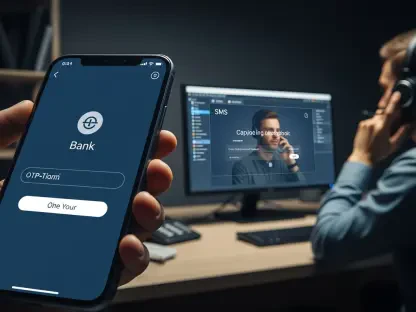I’m thrilled to sit down with Vladislav Zaimov, a seasoned telecommunications specialist with deep expertise in enterprise solutions and risk management for vulnerable networks. With years of experience navigating the complexities of modern communication systems, Vladislav offers a unique perspective on how technology can rebuild trust in phone calls. In our conversation, we dive into the reasons behind the widespread distrust of unknown callers, explore innovative solutions for spam and fraud prevention, discuss the role of branded caller ID in business communications, and examine the transformative power of AI in enhancing caller identification. Join us as we uncover the future of secure and reliable telephony.
Can you explain why so many people avoid answering calls from unknown numbers these days?
Absolutely. The main reason is the overwhelming rise in spam and fraudulent calls. People are bombarded with robocalls, scams, and phishing attempts daily, so they’ve become wary of picking up calls from numbers they don’t recognize. Studies show that around 80% of unidentified calls go unanswered, and that’s largely because trust has been eroded. This behavior hurts businesses too—legitimate companies struggle to reach customers for important updates or sales, often getting ignored or sent straight to voicemail. It’s a vicious cycle that impacts communication across the board.
What drives the mission to restore trust in phone calls, and how did this become a personal passion for you?
For me, it’s about reconnecting people in a meaningful way. Phone calls are still one of the most direct and personal forms of communication, but that value is lost when fear of scams overshadows every ring. My passion grew from seeing how businesses and individuals alike suffer from this distrust. I’ve worked with companies that lost significant revenue just because customers wouldn’t pick up. Restoring trust isn’t just a technical challenge; it’s about preserving the human connection at the heart of every call.
How do real-time spam detection technologies work to tackle unwanted calls?
These technologies rely on advanced analytics integrated directly into telecom networks. They analyze call patterns, caller behavior, and historical data to flag spam in real-time before the call even reaches the recipient. For instance, if a number is making thousands of calls in a short span, it’s likely a robocall operation. The system can then block or label the call as suspicious. The key is ensuring accuracy—sophisticated algorithms are designed to minimize false positives, so legitimate calls from, say, a small business don’t get caught in the net.
Can you elaborate on how branded caller ID helps businesses improve their outreach?
Branded caller ID is a game-changer. Instead of a random number popping up, the recipient sees the company’s name or logo, instantly signaling who’s calling. This transparency boosts answer rates significantly—people are far more likely to pick up when they recognize the caller. It’s especially valuable for industries like retail, healthcare, or financial services, where trust and timely communication are critical. Businesses report dramatic improvements in customer engagement just by making their identity clear from the start.
Why is monitoring caller reputation becoming so important for enterprises?
Caller reputation is essentially how a business’s phone number is perceived across different carrier networks. If a number gets mislabeled as spam due to high call volumes or user reports, even legitimate calls can be blocked or ignored. Monitoring reputation allows companies to spot these issues early and take corrective action, like appealing mislabels or adjusting outreach strategies. It’s crucial for maintaining connectivity with customers, especially for outbound teams in sales or customer support who rely on calls to drive their operations.
How do partnerships with major carriers and manufacturers amplify efforts to combat call-related issues?
Collaborations with big players in the industry are vital because they expand the reach and impact of solutions. When you partner with carriers and device manufacturers, you’re integrating protective tools directly into the ecosystem that millions of users interact with daily. This means spam filters and caller ID enhancements can be deployed at scale, protecting a vast audience while ensuring businesses have a reliable channel to connect. These partnerships also foster trust—when users see major brands backing a solution, they’re more likely to adopt it.
How has the use of AI and machine learning evolved in filtering unwanted communications over the years?
AI and machine learning have been transformative since we started leveraging them years ago. Early on, filtering was based on static rules, like blacklisting known spam numbers. But AI takes it to another level by learning from massive datasets—call volumes, user feedback, even voice patterns—to predict and adapt to new spam tactics in real-time. Over the years, we’ve seen accuracy improve dramatically, with fewer legitimate calls being mistakenly blocked. It’s a constant evolution as scammers get smarter, but AI keeps us a step ahead.
Can you describe how AI-powered call screening tools benefit businesses in managing incoming calls?
AI call screening acts like a virtual assistant for businesses. It can answer calls, identify the caller’s intent, and route them to the right department or even handle basic inquiries on its own. For example, it might confirm an appointment or provide store hours without human intervention. This ensures no call goes unanswered, even during peak times, and frees up staff to focus on more complex tasks. For companies, it means better customer satisfaction and no missed opportunities, especially in competitive markets.
What specific advantages do these innovations bring to contact centers and outbound teams?
Contact centers and outbound teams benefit immensely from these tools. Higher answer rates through branded ID mean more successful connections, which directly impacts sales and customer service metrics. Spam protection ensures their numbers aren’t flagged incorrectly, maintaining their reputation. Plus, AI screening helps manage high call volumes efficiently, reducing wait times and improving the customer experience. Ultimately, these innovations help recover the effectiveness of the voice channel, which has been undermined by spam for too long.
What is your forecast for the future of caller identification and trust in telecommunications?
I’m optimistic about where we’re headed. I believe we’ll see even tighter integration of AI and network-level solutions, making spam and fraud nearly obsolete for users who adopt these technologies. Caller ID will become more dynamic and personalized, offering not just a name but context about why someone’s calling. Trust will be rebuilt through transparency and user control—giving people the power to decide who gets through. In the next five to ten years, I expect the voice channel to reclaim its place as a trusted, primary mode of communication, driven by these advancements.









